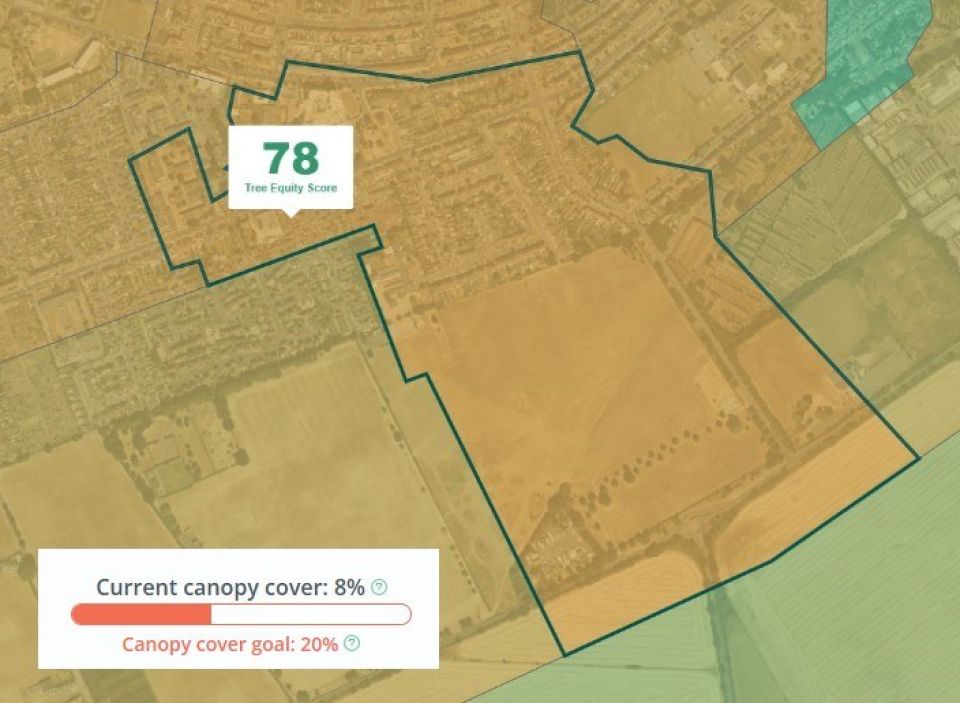London Tree Ring: Connecting Woodland and People

This planting season, Trees for Cities has been contributing towards the London Tree Ring, a vision for driving the creation of more woodland around our capital. Find out about our involvement to date at Hainault Recreation Ground, a site in the London Borough of Redbridge where we planted in November, adding to the trees that we planted in the same area over five years ago.
More Trees for Hainault Recreation Ground
On 16th November 2024, 150 volunteers (including just over 40 kids!) planted just over 2500 whips (small trees). Find out about the project and hear from our volunteers:
What is the London Tree Ring?
A group of organisations from the London Urban Forest Partnership, including Trees for Cities, are working together to increase woodland creation around the capital, including ambitions to form a Tree Ring around London. Acting like an M25 for nature, its goals are to link wooded areas so that wildlife can move between them, enrich the capital’s biodiversity, and provide community-friendly green spaces.
Two London Urban Forest Partners, Greenspace Information Greater London and CPRE London, have conducted mapping and done research to identify priority sites for woodland creation, which highlighted Hainault Recreation Ground as a key planting opportunity.
Beyond creating and connecting woodland, this project has seen communities come together with Trees for Cities. One community planting day volunteer shared: “What a brilliant way to get the family outdoors while doing something for the community! Lovely spending time with everyone.”

Tree equity explained
Beyond Hainault Recreation Ground’s ideal positioning for the London Tree Ring, it has been identified as an area of low tree equity, with an estimated canopy cover of just 8% according to Tree Equity Score UK, compared to the London average of 21%, and England average of 16%.

But what is tree equity, and why does it matter? Its aim is for all people to have equitable access to the benefits of trees, no matter their postcode. Areas of low tree equity with minimal tree cover are found disproportionality in urban areas, with the most deprived communities often hit the hardest. Without trees in towns and cities, we’re more susceptible to breathing polluted air, struggling with rising temperatures, and suffering with poor mental health and wellbeing.
Increasing Hainault’s tree cover over the years
We’re proud to be further adding to Hainault’s tree canopy cover, having also planted there in December 2019. This means that we’re adding to the age diversity of the existing trees, which is beneficial for biodiversity in terms of the range of habitat for wildlife provided. Our in-house design team have carefully selected the trees species to make sure they’re aligned with existing species in Hainault Forest while keeping climate-resilience top of mind.

Made possible by partners
Many thanks to our partners BUPA Foundation who support this project and the ambition of the London Tree Ring, alongside Redbridge Council and Vision Redbridge Culture and Leisure.
Stay informed about exciting stories like this as they land by signing up to receive email updates, and follow the trees @TreesForCities.
Find out more
-

How the UK’s new Tree Equity Score map can be the basis for change
The Tree Equity Score map highlights what we at Trees for Cities have been championing for 30 years - so how best can we use this powerful resource to help areas that need it most?
-

Let's talk trees
Recent research by Forest Research highlights that deprived areas are still more likely to be devoid of trees.
-

Trees in our cities: 10 reasons we need to plant more
Discover the power of urban trees that bring a raft of benefits to the 84% of us who live in cities, ranging from cleaning our air to supporting biodiversity.
Donate to Trees for Cities and together we can help cities grow into greener, cleaner and healthier places for people to live and work worldwide.
Donate